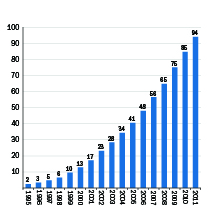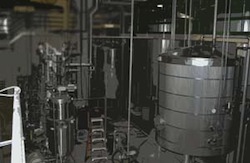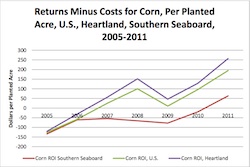 A new coalition forms to fight back against the push against the Renewable Fuels Standard… a fight prompted by the drought and the pressure the drought is causing on the most common feedstock for ethanol, corn. During a recent news conference, former congressman and now CEO of the Biotechnology Industry Organization… or BIO… Jim Greenwood was one of the leaders of the new coalition dubbed Fuels America, a diverse group of interests, including renewable fuels, national security, renewable energy and other stakeholders. Growth Energy, the Renewable Fuels Association, the American Coalition for Ethanol, the National Corn Growers Association, BIO and the Advanced Ethanol Council are part of Fuels America, as well as several biofuel companies, such as DuPont, POET and Novozymes.
A new coalition forms to fight back against the push against the Renewable Fuels Standard… a fight prompted by the drought and the pressure the drought is causing on the most common feedstock for ethanol, corn. During a recent news conference, former congressman and now CEO of the Biotechnology Industry Organization… or BIO… Jim Greenwood was one of the leaders of the new coalition dubbed Fuels America, a diverse group of interests, including renewable fuels, national security, renewable energy and other stakeholders. Growth Energy, the Renewable Fuels Association, the American Coalition for Ethanol, the National Corn Growers Association, BIO and the Advanced Ethanol Council are part of Fuels America, as well as several biofuel companies, such as DuPont, POET and Novozymes.
 In this edition of the Domestic Fuel Cast, listen in as Greenwood is joined by Novozymes president Adam Monroe, Marion (Ohio) Chamber of Commerce president Pam Hall, and ZeaChem president and CEO Jim Imbler who make the case for preserving the RFS.
In this edition of the Domestic Fuel Cast, listen in as Greenwood is joined by Novozymes president Adam Monroe, Marion (Ohio) Chamber of Commerce president Pam Hall, and ZeaChem president and CEO Jim Imbler who make the case for preserving the RFS.
You can listen to the Domestic Fuel Cast here: Domestic Fuel Cast





 “Today, ethanol is presenting the U.S. with a critical opportunity to expand domestic energy production and reduce foreign oil imports by millions of barrels. The future of energy independence and a stronger America is being realized right here, right now, every day, in ethanol plants across the country,” said McKinstray. “It is important that the industry continues to drive forward, ensuring that we maintain critical policies like the Renewable Fuel Standard (RFS), extend key tax policies for new fuel commercialization and investment in renewable fuel infrastructure so that we can continue to provide American consumers with more clean fuel options.”
“Today, ethanol is presenting the U.S. with a critical opportunity to expand domestic energy production and reduce foreign oil imports by millions of barrels. The future of energy independence and a stronger America is being realized right here, right now, every day, in ethanol plants across the country,” said McKinstray. “It is important that the industry continues to drive forward, ensuring that we maintain critical policies like the Renewable Fuel Standard (RFS), extend key tax policies for new fuel commercialization and investment in renewable fuel infrastructure so that we can continue to provide American consumers with more clean fuel options.”





